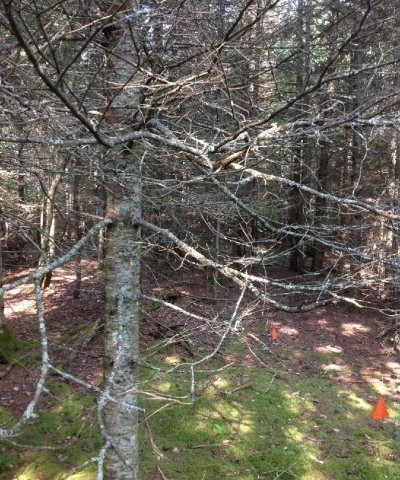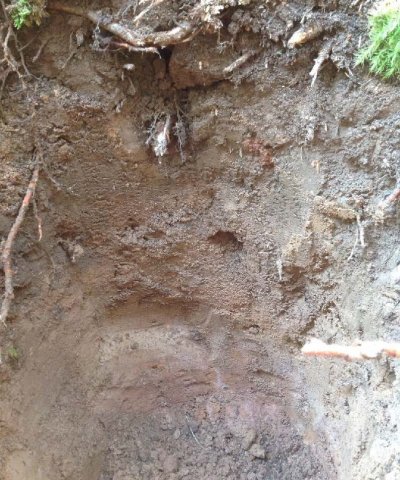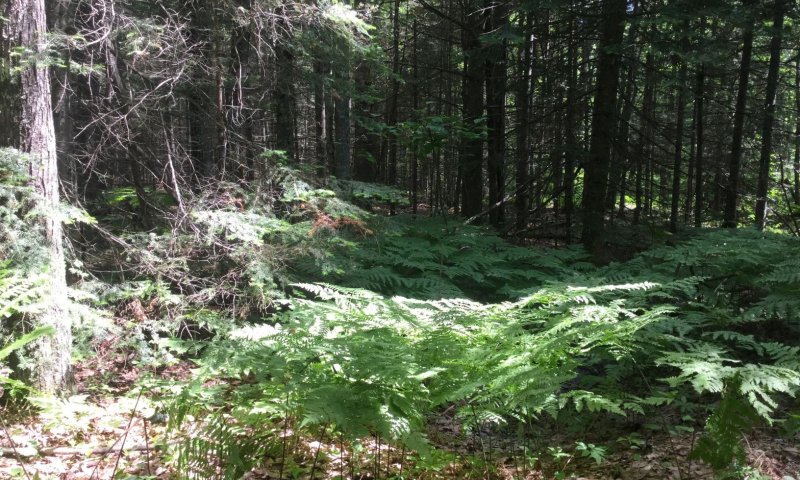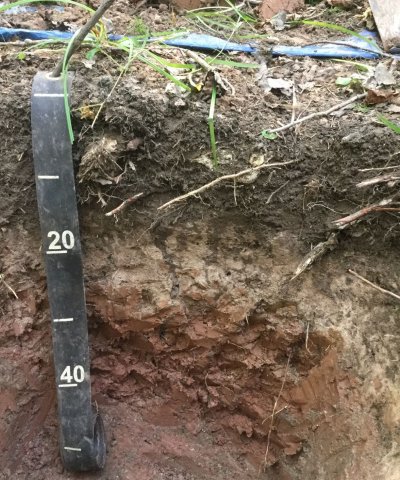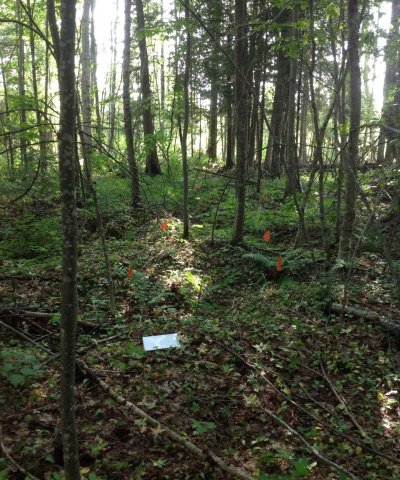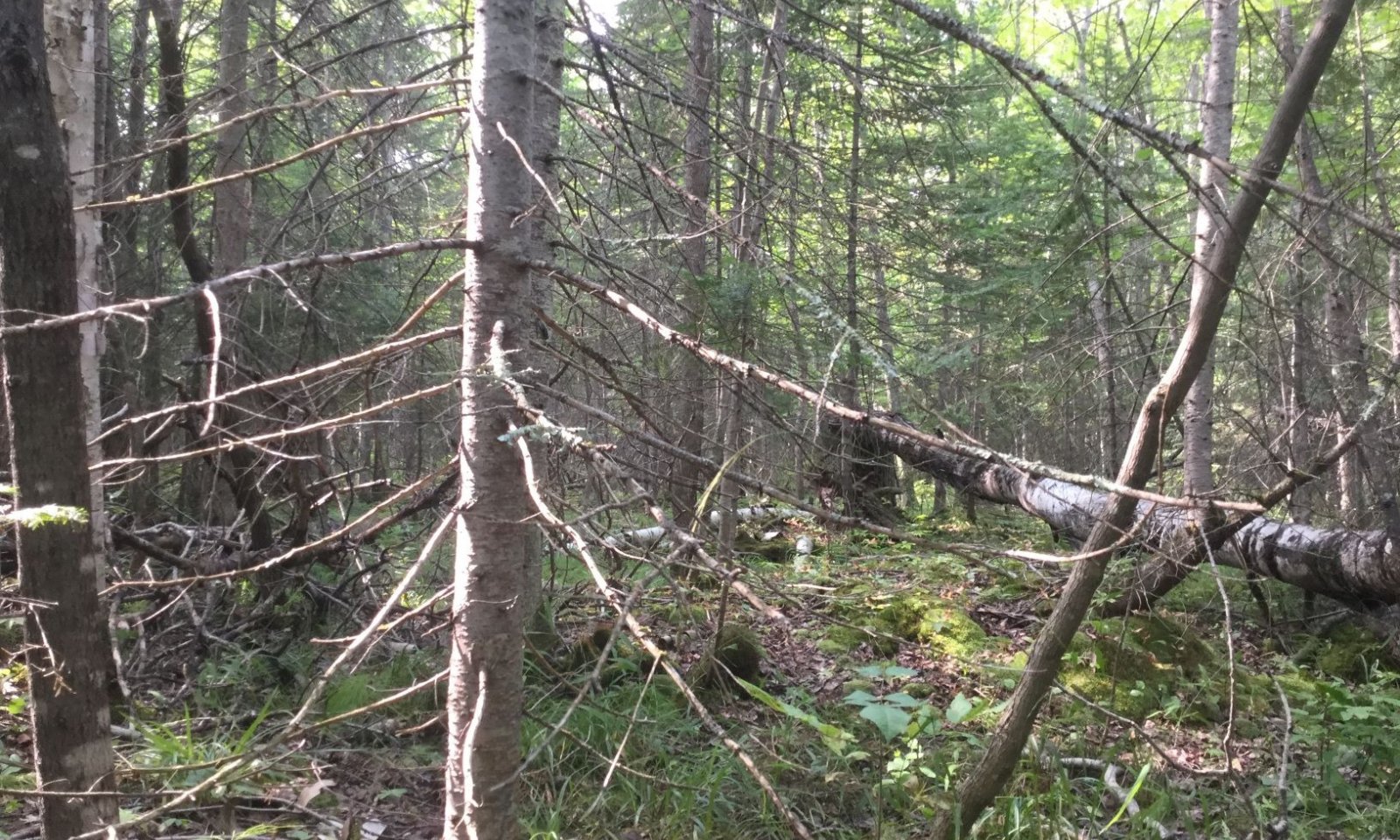

Natural Resources
Conservation Service
Ecological site R092XY009WI
Loamy Sandstone Uplands
Last updated: 4/09/2020
Accessed: 12/18/2025
General information
Provisional. A provisional ecological site description has undergone quality control and quality assurance review. It contains a working state and transition model and enough information to identify the ecological site.
MLRA notes
Major Land Resource Area (MLRA): 092X–Superior Lake Plain
The Wisconsin portion of the Superior Lake Plain (MLRA 92) corresponds very closely to the Superior Coastal Plain Ecological Landscape published by Wisconsin Department of Natural Resources (WDNR 2015). The following brief overview of this MLRA is borrowed from that publication.
The Superior Coastal Plain is bordered on the north by Lake Superior and on the south by the Northwest Sands, Northwest Lowlands, and North Central Forest Ecological Landscapes. The total land area is approximately 1.2 million acres, which mostly consists of privately-owned forestland. The climate is strongly influenced by Lake Superior, resulting in cooler summers, warmer winters, and greater precipitation compared to more inland locations. The most extensive landform in this ecological landscape is a nearly level plain of lacustrine clays that slopes gently northward toward Lake Superior. The coastal plain is cut by deeply incised stream drainages and interrupted by the comparatively rugged Bayfield Peninsula.
During the Late Wisconsin glacial period, this area was covered with the advancing and retreating lobes of Superior and Chippewa. The landscape was rippled with moraines, but they were subdued by deposition of lacustrine materials. As the glaciers receded, glacial lakes riddled the landscape—most notably, Glacial Lake Duluth. The glacier receded eastward, exposing the western Lake Superior Basin. The ice covered the eastern basin, blocking the outlet of the lake, and continued to recede and contribute meltwaters that filled the glacial lake. The deep, red clays were deposited during this period of glacial lakes. The meltwaters from the glacier also contained sands which were deposited along the edge of the glacial lakes as beach deposits. Deep, narrow valleys have since been carved by rivers and streams flowing north into Lake Superior.
Historically, the Superior Coastal Plain was almost entirely forested. Various mixtures of eastern white pine (Pinus strobus), white spruce (Picea glauca), balsam fir (Abies balsamea), white birch (Betula papyrifera), balsam poplar (Populus balsamifera), quaking aspen (Populus tremuloides), and northern white-cedar (Thuja occidentalis) occurred on the fine-textured glacio-lacustrine deposits bordering much of the Lake Superior coast. Sandy soils, sometimes interlayered with clays, occur in some places. Such areas supported forests dominated by eastern white pine and red pine (Pinus resinosa). Eastern white pine was strongly dominant in some areas, according to mid-19th century notes left by surveyors of the federal General Land Office (Finley, R. 1976). Dry-mesic to wet-mesic northern hardwoods or hemlock-hardwood forests were prevalent on the glacial tills of the Bayfield Peninsula. Large peatlands occurred along the Lake Superior shoreline, associated with drowned river mouths.
Classification relationships
Habitat Types of N. Wisconsin (Kotar, 2002): This ES keys out to Acer rubrum – Abies balsamea / Vaccinium spp. – Cornus canadensis [ArAbVCo].
Biophysical Setting (Landfire, 2014): This ES is mapped as Laurentian-Acadian Northern Hardwoods Forest-Hemlock; and Laurentian – Acadian Sub-boreal Mesic Balsam Fir-Spruce Forest – Coastal. This ES is more similar to the Boreal Balsam Fir-Spruce Forest.
WDNR Natural Communities (WDNR, 2015): This ES is most similar to the Boreal Forest.
USFS Subregions: Superior-Ashland Clay Plain Subsection (212Ya); May contain small areas of Ewen Dissected Lake Plain Subsection (212Jo), Winegar Moraines Subsection (212Jc), Gogebic-Penokee Iron Range Subsection (212Jb), and NorthShore Highlands Subsection (212Lb)*
*Located in Upper Peninsula of Michigan (212J) and Minnesota (212Lb)
Major Land Resource Area (MLRA): Superior Lake Plain (92)
Ecological site concept
Loamy Sandstone Uplands occurs on the sandstone outcrops located on the shore of Lake Superior on the mainland and the Apostle Islands. The soils on these sites formed loamy alluvium and till or clayey till, underlain by sandstone bedrock. The solum depth can range, but the soil is always underlain by sandstone within 100 cm. These sites are moderately well to somewhat poorly drained. These sites receive water primarily through precipitation. Sites may have a seasonally high water table at a depth of 32 to 60 cm, but will remain somewhat saturated throughout the growing season. The sites range from strongly acid to neutral.
Based on historic records, ecological and soils literature, and scattered examples of old forest stands (Curtis, 1959; Finley,1976; Wilde, 1976; Schulte and Mladenoff 2001; Kotar et al. 2002) we can conclude that this Ecological Site historically was dominated primarily by coniferous forests. Balsam fir and white spruce were major dominants, but there were considerable admixtures of white and red pine. Mesic hardwoods, especially sugar maple and basswood, find soil conditions on this Ecological Site to be sub-optimal and they occur only sporadically. The 19th and early 20th century logging and associated fires have drastically altered the forest composition and structure. Today’s stands are most often dominated by varying mixtures of aspen, white birch, red maple, and balsam fir. Ground flora includes bracken fern, ostrich fern, wood ferns, Canada mayflower, wood anemone, and mosses.
This ES has a finer soil texture, retains more moisture, and can have a more neutral pH to allow for a broader vegetative community than the Sandy Sandstone Uplands. This ES differs from other loamy sites by its shallow solum truncated by lithic contact.
Associated sites
| R092XY007WI |
Wet Loamy or Clayey Lowlands These sites are poorly drained soils formed in mainly clayey though sometimes loamy glaciofluvial and silty glaciolacustrine sediments. They have a seasonally high water table and remain saturated for much of the growing season, creating hydric conditions. HGM criteria: recharge, Depressional. The loamy sites are located lower in the drainage sequence than Loamy Sandstone Uplands, and remain saturated much longer during the year. |
|---|---|
| R092XY011WI |
Moist Loamy Lowlands These sites are somewhat poorly drained soils formed in various parent materials, but are primarily loamy. The loamy texture causes the soil to remain moist for much of the growing season, but does not remain saturated long enough to form hydric conditions. These sites are located lower in the drainage sequence than Loamy Sandstone Uplands, and remain saturated longer during the year. |
Similar sites
| R092XY008WI |
Sandy Sandstone Uplands These sites are shallow sandy soils that overly sandstone bluffs along the shore of Lake Superior. They are excessively drained, do not remain saturated any time of the year, and are strongly acidic. These sites differ from Loamy Sandstone Uplands based on their texture and drainage. They are located on a similar landscape. |
|---|---|
| R092XY014WI |
Loamy Uplands These sites are deep, moderately well to well drained loamy soils. They formed in loamy and silty till, glaciolacustrine, or glaciofluvial deposits. Some sites have a sandy mantle. Many sites have a seasonally high water table, but does not remain saturated for the growing season. Soils range from strongly acid to strongly alkaline, and some sites have carbonates present. Both sites are characterized with the ArAbVCo Habitat Type. This site has a deep solum, and has a wider range of pH than the Loamy Sandstone Uplands. |
Table 1. Dominant plant species
| Tree |
(1) Acer rubrum |
|---|---|
| Shrub |
(1) Corylus cornuta |
| Herbaceous |
(1) Eurybia macrophylla |
Click on box and path labels to scroll to the respective text.
Ecosystem states
| T1A | - | Stand replacing disturbance that includes fire. |
|---|---|---|
| T1B | - | Removal of forest cover and tilling for agricultural crop production. |
| R2 | - | Deciduous forest community is slowly invaded by conifers. |
| T2A | - | Removal of forest cover and tilling for agricultural crop production. |
| R3A | - | Cessation of agricultural practices leads to natural reforestation, or site is replanted. |
| R3B | - | Cessation of agricultural practices leads to natural reforestation, or site is replanted. |
State 1 submodel, plant communities
| 1.1A | - | Blow-down, sever ice storm, or large scale mortality in overstory. |
|---|---|---|
| 1.2A | - | Advanced regeneration response to canopy disturbance. |
